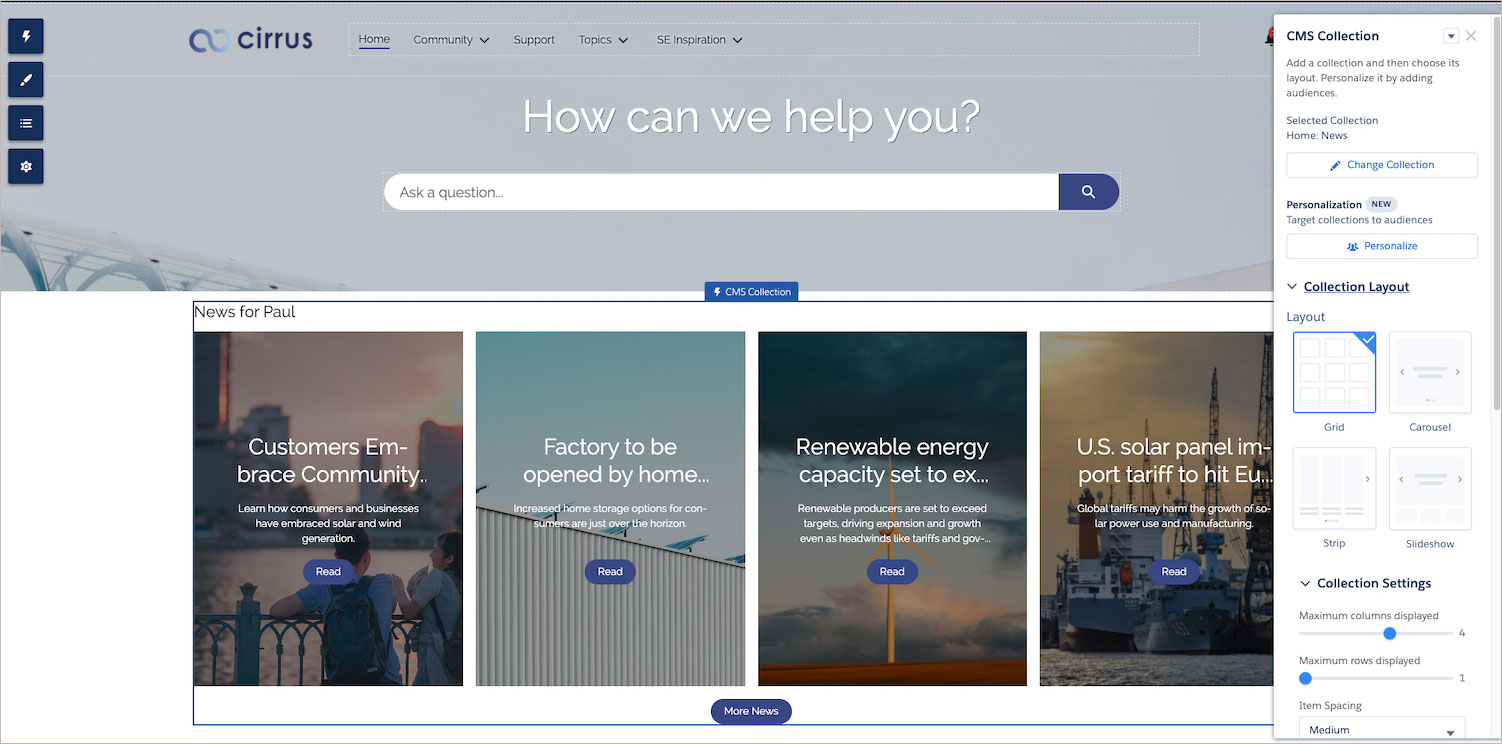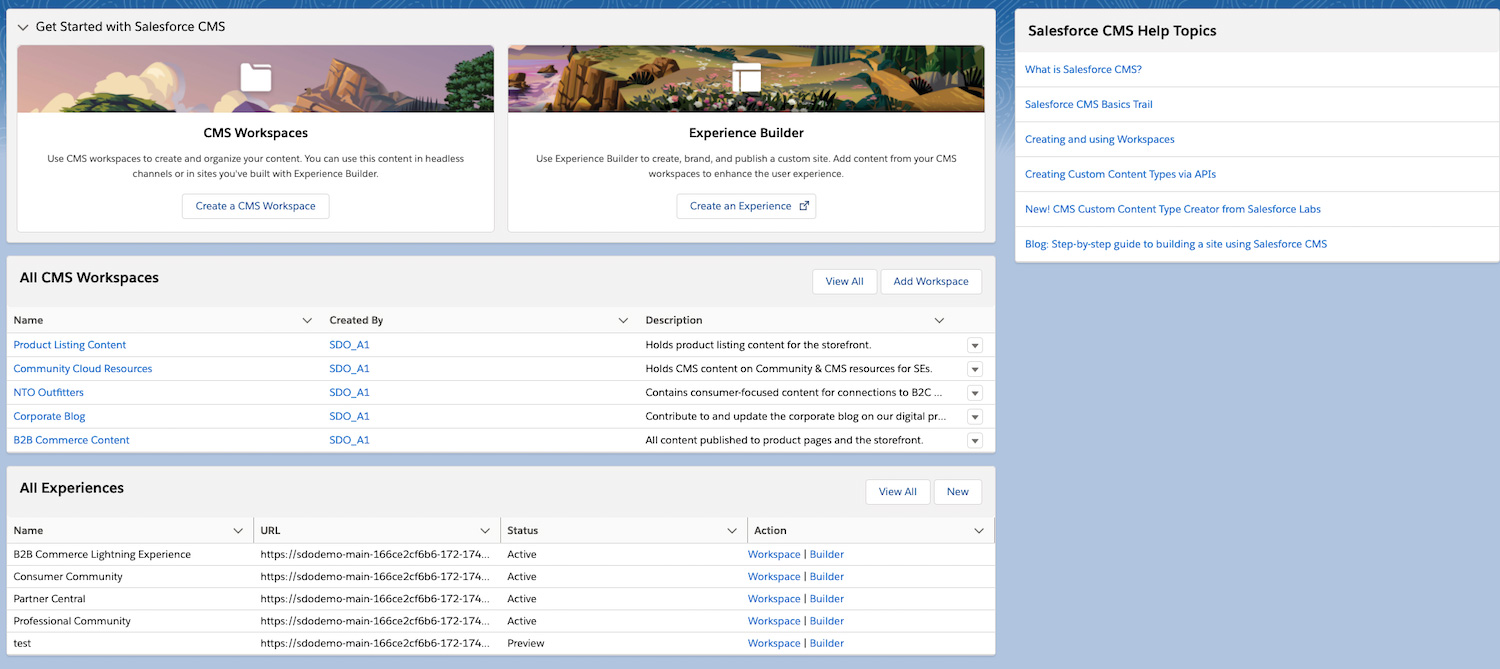While you’ve probably read numerous articles about why you should invest in content marketing, it’s rare that any of these blogs go beyond the basics of content management systems (CMS) or why you need one. So let’s dive in.
First, what is content?
Put simply, content is the conversation that you have with customers. More specifically, it’s the collection of texts, images, recordings, and videos that customers consume to engage with your brand. This blog post? It’s a piece of web content. That Instagram story you just viewed? The icon you clicked on to schedule a virtual visit? That’s content, too. Do you browse the latest products on your favorite e-commerce sites? That’s also content. News articles, banner ads, social posts, and even something as basic as the logo on a mobile app are pieces of content. But, when we talk about content in the context of customer engagement, content usually refers to some form of digital text, imagery, video, or sound recording.
Go far fast by connecting content to CRM data
Explore all you can do with the Salesforce CMS.



So, what is a CMS?
A content management system (CMS) is a technology platform that allows you to create, edit, produce, and organize digital content, usually for the web. Today, most content management systems go beyond the basics, with support for indexing, search, and SEO. The fundamental purpose of a CMS is simple: To create and update digital content for internal or external publication.
Why is a CMS important?
More than just managing content, a CMS tool puts your content to work to build better relationships with your audience. Businesses want to be able to create, manage and deliver the right content to the right customer at the right place across the entire customer journey, from marketing and purchasing, to support, loyalty and beyond. This can yield huge dividends for every part of your business.

For example, marketers can use content to engage customers to recommend and introduce new products. Content can be a vehicle to support better service, and it can teach customers to use your products in new ways or replace parts themselves. In our increasingly digital world, content can help bring a brand experience to life when in-person is not an option. Content can also help drive sales, generate leads, and boost customer and partner engagement. The key here is knowing your goals around creating a compelling, end-to-end journey for your customer, and what content will keep them engaged along the way.
Content management system in action
Consider this blog post. A blog post is one of the most common content types found in a CMS. And within this one blog post, there are multiple pieces of sub-content (content within content!): a publication date, author, title, banner image – even the image that appears at the top of the page – and body copy. If you consider the entire page you’re reading, you’ll find even more pieces of content, such as related blogs, industry reports, or even embedded video.
Blog posts are just one type of content that you can create and modify for publication with a CMS. There are countless other content types, including product catalogs, FAQs, press releases, and news articles … a full list of text- and image-based content would be too long for any article to include! And many CMSs can also serve up more complex content types, like podcasts or videos.
CMS: A 100-word history
In the early days of the web, you could only publish content if you knew HTML or had help from a developer. As you can imagine, the process frustrated both content creators who needed to share updates with customers and developers who had to deal with nonstop incoming content requests. Over time, a variety of CMS tools have emerged to solve that problem and make experience development easy for anyone, with or without a computer science degree. These tools let non-developers create, modify, and publish content to a web audience, typically, with a WYSIWYG (what you see is what you get) editing tool.

Available CMS Types
We’re now in a “post-web” era where customers interact with brands across many digital touchpoints. In response, CMS technology has evolved to support omnichannel content delivery — more distribution channels, types of content, and content development processes. When we look at the current market, we see three main categories of CMS:
Coupled CMS
Widely used, a coupled CMS includes most of the legacy systems with roots in the early days of the web. These legacy systems couple content creation and modification with the presentation “touchpoint,” such as a website. It’s impossible to separate the management and presentation layers in a coupled CMS.
Advantages
The technology is familiar for many content creators with a long history of content development. It is also a simplified framework for companies that have a digital presence only on the web (which is fewer and fewer businesses these days).
Disadvantages
Coupled CMS may not support the breadth of modern content destinations, such as smart devices, wearables, and custom apps, or personalized experiences in portals.
Headless CMS
This type of CMS resolves the challenges of coupled creation and presentation by dropping the presentation touchpoint, or presentation “head.” You use a headless CMS to create and modify content, but that content needs to feed into a separate presentation application.
Advantages
Because your content isn’t fused to the presentation layer, meaning you can send it anywhere, you have full control over how and where your content is presented.
Disadvantages
A headless CMS requires more investment of time and money into external presentation channels.
Hybrid CMS
A hybrid CMS provides a native experience channel or touchpoint, but also gives you the flexibility to present content to any touchpoint built on a third-party system. In this context, a native experience means that the content was created on the same platform as the presentation channel. So, if your CMS is primarily a blog platform, the posts you create will be part of (as in native to) that platform, as well as the site through which those blog posts will be surfaced to the reader. This flexibility means that a hybrid CMS can be used in conjunction with a legacy CMS.
Advantages
Saves time by taking advantage of built-in experience templates and presentation tools. You completely own the content presentation, both on and off of the main CMS, so customers have a completely connected content experience no matter the channel.
Disadvantages
While some hybrid solutions aren’t as flexible as headless when it comes to publishing to IoT or cross-platform devices, however with the right hybrid CMS, you can overcome this obstacle and create beautiful, connected digital experiences.
The future of content management systems
The CMS evolution hasn’t stopped: Personalization is pushing CMS in exciting directions. As part of digital transformation, businesses are building digital experiences that are more relevant for their customers. The goal is to ensure each and every user has an experience that is uniquely curated for their needs — no matter where they engage with a brand,whether that be a website, mobile app, or social media.
Many look to artificial intelligence to drive personalization — and they should. But a wealth of personalization potential starts with CRM, so why not link your CMS and CRM, and put personalization on the fast track? As CRM-powered and content-rich customer and partner portals deliver better experiences, a CMS must support the content side of the vision. A hybrid CMS, with both the pluses of coupled CMS and the flexibility of headless, provides you with a crucial building block for creating better digital experiences.
The right digital experience platform (DXP) can help you combine CRM and CMS. Learn more about how Salesforce CMS makes it possible to create, organize, and publish content that informs the customer and partner journey.




























